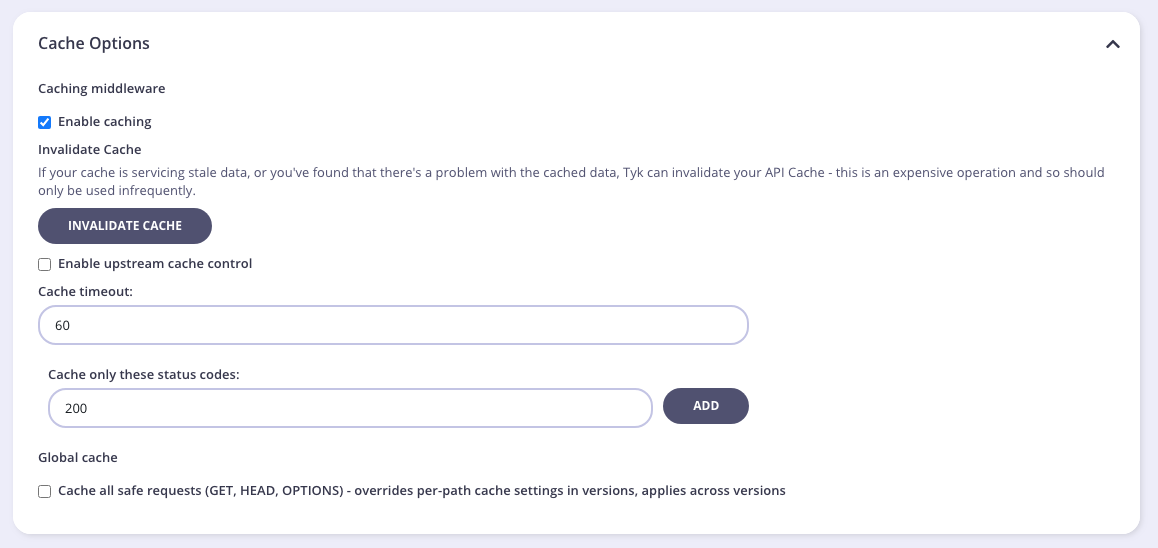Basic (Global) Caching
Caching is configured separately for each API according to values you set within the API definition.
If you are using the Tyk Dashboard you can set these options from the Dashboard UI, otherwise you will need to edit the raw API definition.
Configuring the API-level (global) cache
Within the API Definition, the cache controls are grouped within the cache_options section.
The main settings are:
enable_cache: Set totrueto enable caching for the APIcache_timeout: Number of seconds to cache a response for, after which a new response will be cachedcache_response_codes: The HTTP status codes a response must have in order to be cachedcache_all_safe_requests: Set totrueto apply the caching rules to all requests using GET, HEAD and OPTIONS HTTP methods and overrides any per-endpoint configuration for this API
For example, to enable global caching for all safe requests to an API, only storing HTTP 200 responses, with a 10 second TTL, you would set:
"cache_options": {
"enable_cache": true,
"cache_timeout": 10,
"cache_all_safe_requests": true,
"cache_response_codes": [200]
}
Note
If you set cache_all_safe_requests to true, then the cache will be global and all inbound requests will be evaluated by the caching middleware. This is great for simple APIs, but for most a finer-grained control is required.
Configuring the Cache via the Dashboard
Follow these simple steps to enable and configure basic API caching via the Dashboard.
Step 1: Go to the Advanced Options
From the API Designer, select the Advanced Options tab:

Step 2: Set the Cache Options for the Global Cache

Here you must set:
- Enable caching to enable the cache middleware
- Cache timeout to set the TTL (in seconds) for cached requests
- Cache only these status codes to set which response codes to cache (ensure that you click ADD after entering each response code so that it is added to the list)
- Cache all safe requests to enable the global cache
